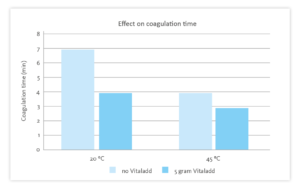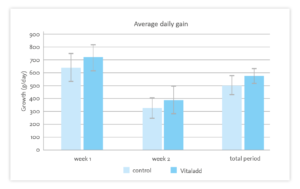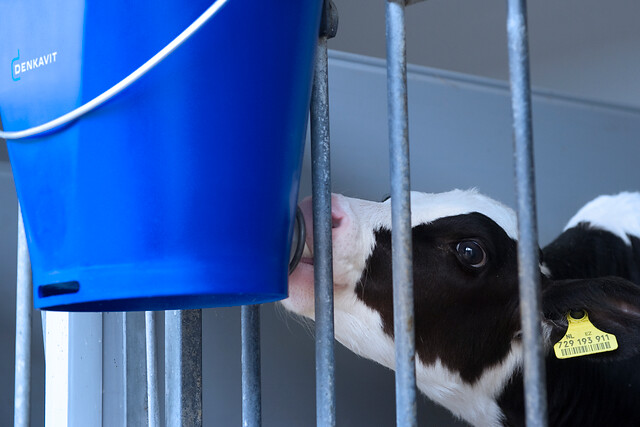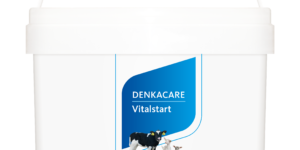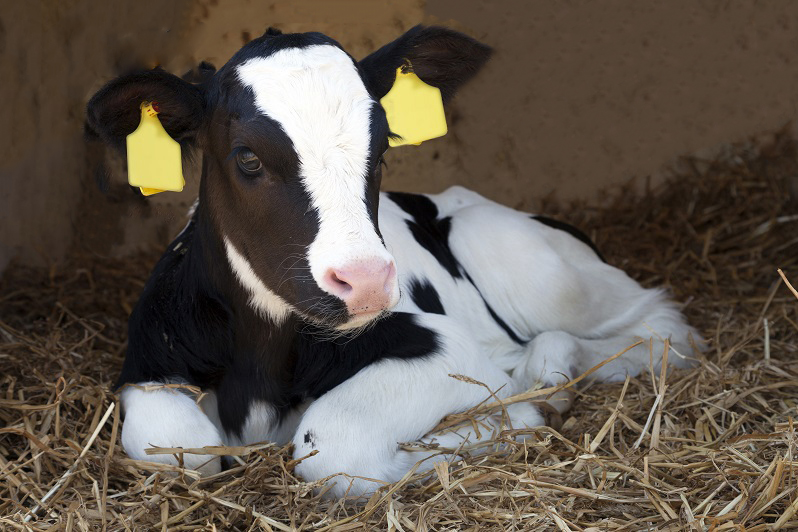3 reasons to acidify cow’s milk
Safe digestion is a broad concept in calf rearing. It often describes the prevention of diarrhoea, but it encompasses more. Milk is digested both in the abomasum and the intestinal system. In the abomasum, pre-digestion takes place with the help of acid and enzymes (including coagulation). This allows the calf to better absorb the nutrients offered at the intestinal level.
(1) Acidification to increase digestibility

The casein protein in cow’s milk or calf milk replacer must first coagulate in the calf’s abomasum for optimal digestion. This takes place under the influence of a low pH and rennet and is similar to the process of making cheese. Citric acid supports this process and can therefore improve the digestibility of cow’s milk. By adding Vitaladd (which contains very tasty citric acid) to the cow’s milk, this coagulation will be considerably faster, which is clear from the research below.
(2) Acidification to inhibit bacterial growth in calf milk
Environmental bacteria can have a negative influence on digestion. The composition of Denkamilk calf milk replacer has been developed in such a way that there is little risk of disrupting digestion. Cow’s milk varies in composition from day to day and is higher in pH compared to calf milk. If cow’s milk remains in the bucket for a longer period (e.g. with unlimited feeding) or if some milk residues remain after cleaning the buckets (e.g. in/near the teats), bacterial growth will increase.
Such bacterial pressure can have a negative influence on digestion. Additional acidification when using cow’s milk is therefore certainly recommended to also inhibit the development of environmental bacteria.
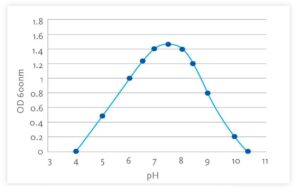
(3) Complement cow’s milk with vitamins and minerals
Through years of development in the field of breeding and feeding, the milk composition of modern dairy cows has changed. The fat and protein content has increased and the concentration of vitamins and minerals has decreased. As a result, the composition of cow’s milk no longer suits the needs of the calf in current rearing systems.
The calf’s mineral and vitamin status are highly dependent on the transfer of these components during gestation over the placenta, via the colostrum and milk. Milk is rich in calcium, phosphorus, potassium and chlorine, but does not provide enough iron, manganese, copper, cobalt and vitamins D and E.
Due to the low concentration of some minerals and vitamins in cow’s milk, the calf is at risk of deficiency. Moderate deficits result in reduced growth and reduced immune response.
Farm research shows more vital calves
Recently, Denkavit conducted a practical study on a large dairy farm in Germany. In the study, all calves were fed unlimited cold cow’s milk after colostrum. Every day (up to 14 days of age), 10g of Vitaladd per litre of cow’s milk was added to the test group. The control group got cow’s milk without any additives. Curious about the results?
The calves fed milk with Vitaladd take in more milk per day. The chart above shows that both in week 1 and week 2, the calves absorb more milk per day; over the first 2 weeks as much as 0.8 litres more per day!
Partly due to the higher milk intake per day, calves fed with Vitaladd achieve a higher daily growth rate (75 g/day!). See the graph below based on our farm research. The calves are more vital, absorb more milk and grow better.
Conclusion: calves in the Vitaladd group
• consumed significantly more milk
• achieved higher daily growth
• had a better manure score
• showed less diarrhoea
• and had better iron, vitamin D and vitamin E status
Contact
If you have any questions, please feel free to contact one of our specialists. Leave the details here and we will contact you!
Contact form - Small
Follow us on LinkedIn & YouTube
Stay informed about our innovations, knowledge and practical tips for calf, piglet, goat and lamb rearing.



